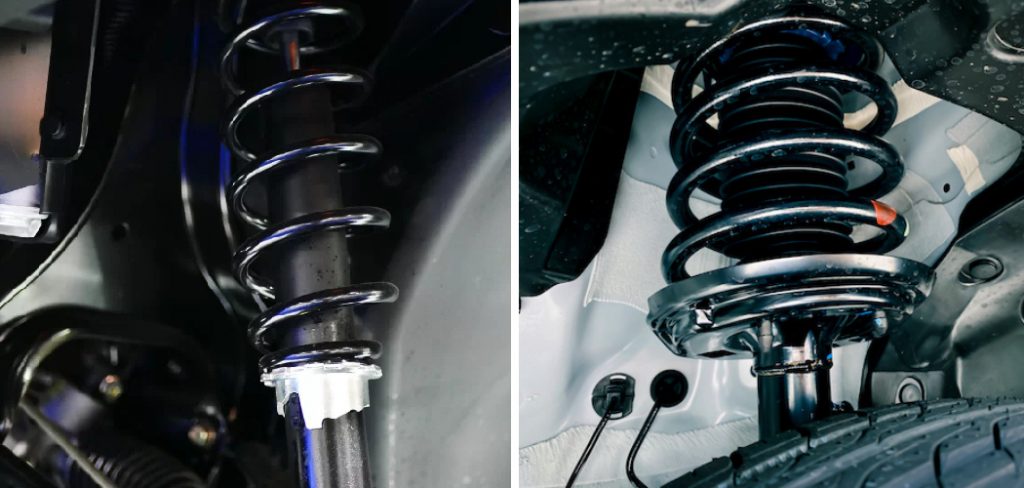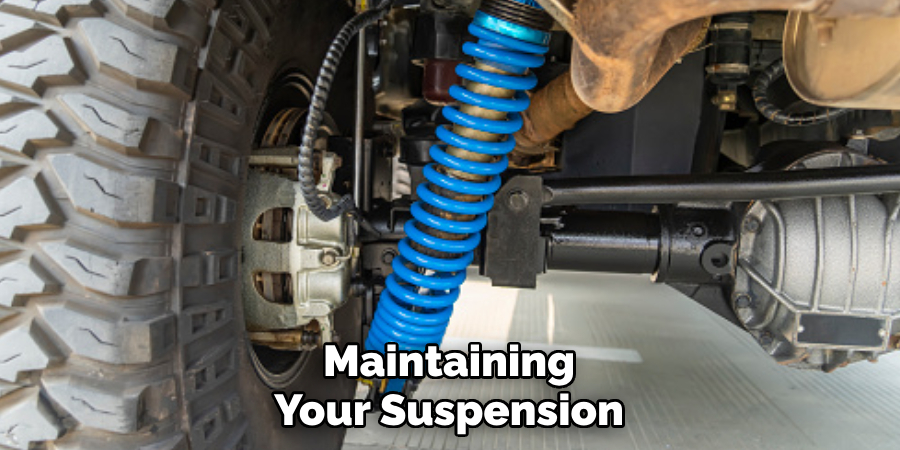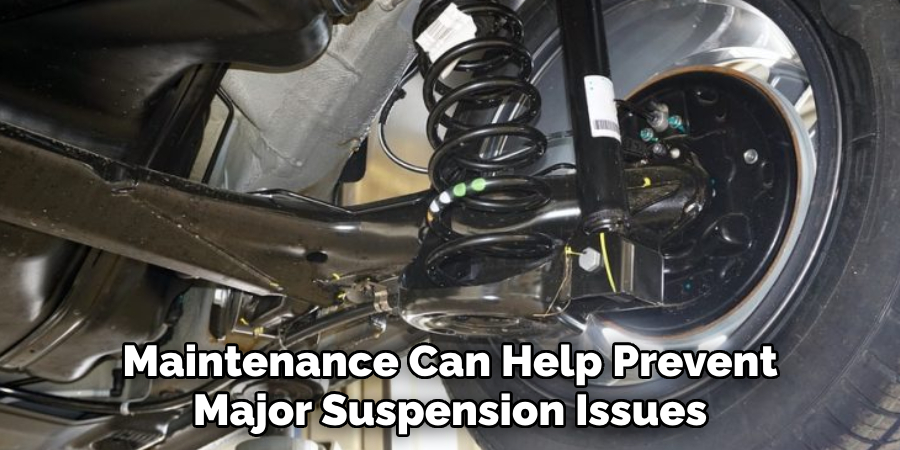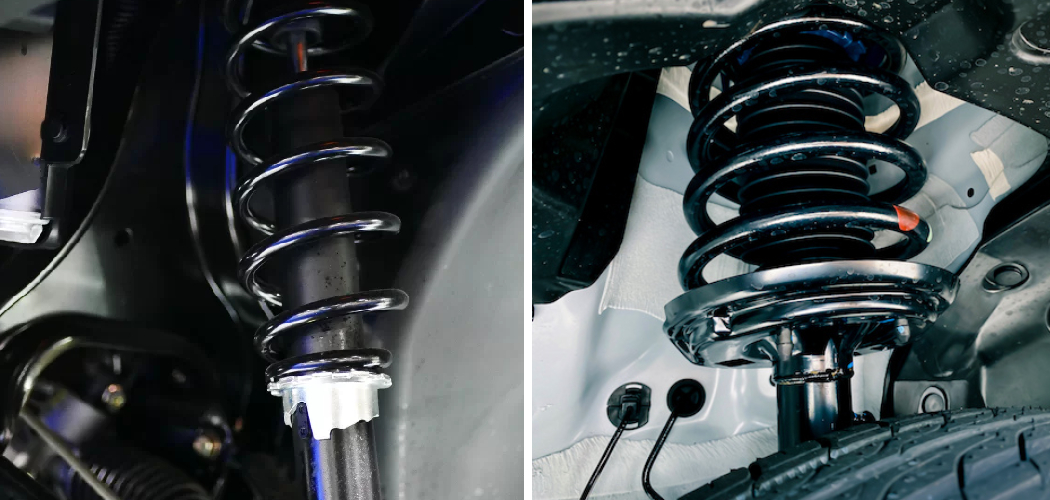For any automotive enthusiast, few components are as crucial or mysterious as the vehicle’s suspension system. Suspension serves as the link between the road and everything else that makes a car go – from steering and handling behavior to ride comfort and safety. Yet for many drivers, the inner workings of shocks and springs remain a bit of a black box.

In this post, I’ll share how to test your suspension. From a simple bounce test to a more rigorous braking inspection, these simple checks can help uncover flaws before they lead to bigger problems or accidents down the road. Let’s get started with some hands-on diagnosis and see what your suspension is telling us about how it’s holding up!
Why is It Important to Test Your Suspension?
1 . To Ensure Safety
Testing your suspension regularly is crucial for ensuring the safety of both yourself and others on the road. A worn or damaged suspension can greatly impact your vehicle’s handling, causing it to become unpredictable and potentially leading to accidents. By regularly testing your suspension, you can identify any issues and address them before they become a safety concern.
2. To Improve Performance
A well-maintained suspension can greatly improve your vehicle’s performance. By testing your suspension, you can identify any areas that may need improvement or adjustment to optimize your car’s handling and ride comfort. This is especially important for those who enjoy driving on challenging roads or participating in motorsports.
3. To Save Money
Regularly testing and maintaining your suspension can also save you money in the long run. By identifying and addressing any issues early on, you can prevent them from developing into more serious and expensive problems. This can help prolong the life of your suspension components and prevent costly repairs or replacements.

4. To Extend Vehicle Lifespan
A healthy suspension system is crucial for the overall lifespan of your vehicle. By regularly testing and maintaining your suspension, you can help prevent premature wear and tear on other components of your car. This can ultimately extend the life of your vehicle and save you money in the long run.
5. To Improve Comfort
Last but not least, regularly testing your suspension can greatly improve your ride comfort. A worn or damaged suspension can cause excessive bouncing, vibrations, and noise while driving, making for a less enjoyable driving experience. By addressing any issues with your suspension, you can ensure a smoother and more comfortable ride.
13 Tips On How to Test Your Suspension
1. The Bounce Test
The simplest way to test your suspension is by performing the bounce test. With the vehicle parked on a flat surface, push down on one corner of the vehicle and release. If the car bounces more than two or three times, this may indicate a worn or damaged shock absorber.
2. The Push Test
Similar to the bounce test, you can also use the push test to check your suspension. With the vehicle parked on a flat surface, push down on one corner of the vehicle and hold for a few seconds. When you release, the vehicle should return to its original position with minimal bouncing. If it continues to bounce, this may indicate an issue with your suspension.
3. The Drive Test
Taking your vehicle for a test drive is another effective way to test your suspension. Pay attention to how the car handles on different road surfaces and if you notice any unusual noises or vibrations while driving. This can help identify any potential issues with your suspension.

4. The Steering Test
During your test drive, make sure to also test your steering system by turning the wheel from side to side. If you notice any difficulty in turning or if the car pulls to one side, this may indicate an issue with your suspension or alignment.
5. The Braking Test
Another important aspect of your suspension system is how it responds during braking. Pay attention to any vibrations or noises while braking, as this could indicate worn brake pads or an issue with your suspension components.
6. The Visual Inspection
A visual inspection can also provide valuable information about the condition of your suspension. Look for any leaks, cracks, or visible damage on the shocks, springs, and other suspension components. If you notice any issues, it’s best to have a professional mechanic take a closer look.
7. The Tread Wear Test
Uneven tire wear is often a sign of an issue with your suspension. Inspect your tires for any uneven tread wear patterns as this could indicate an alignment or suspension problem.
8. The Load Test
Suspension systems are designed to support a specific amount of weight. If your vehicle is frequently carrying heavy loads, it’s important to test your suspension while under load to ensure it can handle the weight without any issues.
9. The Bushing Test
Bushing are small rubber or polyurethane components that help cushion and reduce vibrations in the suspension system. Inspect these regularly for any signs of wear or damage, as they can greatly impact your vehicle’s handling and comfort.
10. The Ball Joint Test
Ball joints are another important component of your suspension system that should be checked regularly. These small, spherical bearings allow for smooth movement and rotation in your suspension. If they become worn or damaged, they can cause clunking noises and affect your vehicle’s steering.

11. The Linkage Test
Linkages are responsible for connecting various suspension components and keeping them properly aligned. Check these for looseness or play, as this could indicate a need for adjustment or replacement.
12. The Shock Absorber Test
Shock absorbers are one of the most critical parts of your suspension system. Inspect them for any leaks, damage, or signs of wear and replace them as necessary.
13. The Spring Test
Finally, make sure to inspect your springs for any signs of sagging, cracking, or corrosion. These can greatly impact your vehicle’s handling and should be replaced if necessary. Remember to always consult your vehicle’s manual or a professional mechanic for specific testing and maintenance instructions for your make and model of car.
Regularly testing your suspension is an important part of maintaining a safe, high-performing, and comfortable vehicle. Don’t wait until you start experiencing issues before taking action – be proactive and test your suspension regularly to ensure optimal performance and longevity.
Frequently Asked Questions
What Precautions Should I Take When Testing My Suspension?
When testing your suspension, always make sure to park on a flat surface and ensure the vehicle is not in gear. Additionally, wear protective gear such as gloves and safety glasses to avoid any potential injuries.
How Often Should I Test My Suspension?
It is recommended to test your suspension at least once a year or every 12,000 miles. However, if you frequently drive on rough roads or carry heavy loads, it is best to test your suspension more frequently.
Can I Test My Suspension On My Own?
While basic tests such as the bounce and push test can be performed on your own, it’s recommended to have a professional mechanic conduct a thorough inspection of your suspension system at least once a year. They have the necessary tools and knowledge to identify any potential issues and provide appropriate solutions.
What Are Some Signs of a Worn Suspension?
Some signs of a worn suspension include excessive bouncing, vibrations, strange noises, difficulty in steering or controlling your vehicle, uneven tire wear, and sagging or leaning of your car’s body.
Can I Drive My Car If I Suspect an Issue with My Suspension?
It is not recommended to drive your car if you suspect an issue with your suspension. Continued driving can cause further damage and potentially lead to unsafe driving conditions. It’s best to have a professional mechanic inspect and repair any issues before driving again.
How Much Does it Cost to Repair a Suspension Problem?
The cost of repairing a suspension problem can vary depending on the type and extent of the issue, as well as your vehicle’s make and model. It is best to consult with a professional mechanic for an accurate estimate. However, regular testing and maintenance can help prevent major suspension issues and potentially save you money in the long run. Remember to always prioritize the safety of yourself and others by regularly testing your suspension system.

Conclusion
Now you know how to test your suspension and why it’s important. By following these tips and regularly inspecting and maintaining your suspension, you can save money, extend the lifespan of your vehicle, and improve your driving experience.
Don’t neglect this crucial aspect of car maintenance and keep your suspension in top shape for years to come. So next time you’re behind the wheel, remember to give your suspension a little extra attention. Your car (and your wallet) will thank you! Happy driving! Keep on testing!

